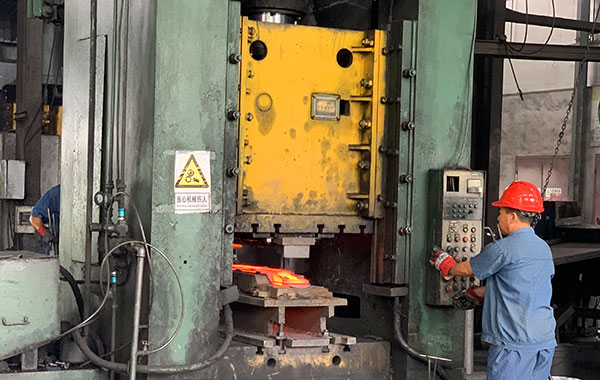Due to differences in chemical composition and microstructure, various materials exhibit distinct behaviors and characteristics during forging. A proper understanding of these differences is essential for optimizing process parameters and ensuring product quality.
1. Carbon Steel
Carbon steels are generally categorized into low, medium, and high carbon steels based on their carbon content. They possess a relatively wide forging temperature range, typically between 1100°C and 1250°C. Low carbon steels offer excellent forgeability due to their high plasticity but are prone to non-uniform microstructures after forging. High carbon steels, on the other hand, exhibit reduced plasticity at elevated temperatures and are more susceptible to cracking. Therefore, precise control of forging temperature and deformation rate is critical.
2. Alloy Steel
Alloy steels are produced by adding alloying elements such as chromium (Cr), nickel (Ni), molybdenum (Mo), and vanadium (V) to carbon steel, enhancing strength, toughness, and wear resistance. The forging temperature for alloy steels is generally slightly lower than that for carbon steels, typically ranging from 1050°C to 1200°C. Some high-alloy steels are sensitive to heating and cooling rates and may develop defects such as coarse grains or white spots. As such, careful control of the heating regime and appropriate post-forging cooling methods is necessary.
3. Stainless Steel
Stainless steels can be classified into austenitic, martensitic, and ferritic types based on their microstructure. Austenitic stainless steels (e.g., 304, 316) have good plasticity but high hot strength, resulting in significant forging resistance. They require higher forging temperatures (1150°C–1250°C) and are susceptible to surface decarburization. Martensitic stainless steels must be quenched promptly after forging to prevent brittleness. Ferritic stainless steels are prone to grain coarsening, thus necessitating control of final forging temperature to maintain favorable grain structure.
Each type of steel exhibits unique forging characteristics. It is imperative to select appropriate heating temperatures, deformation levels, and cooling methods based on the specific material’s microstructure and physical properties. Effective process control is key to achieving dense microstructures and high-quality forged components.


